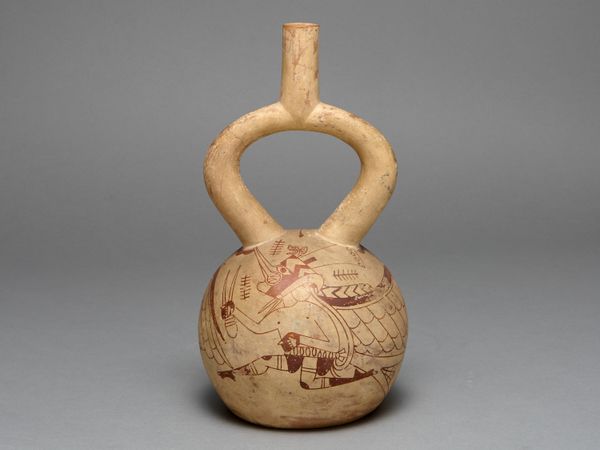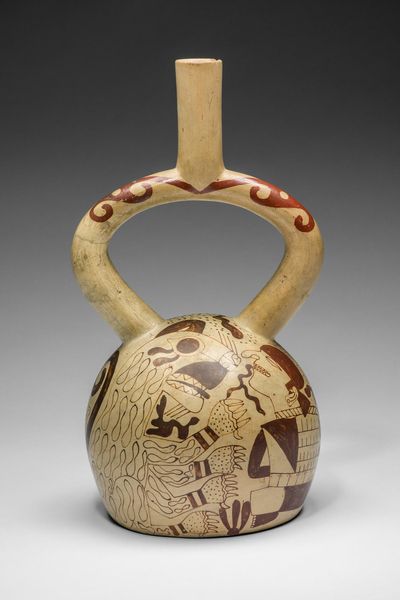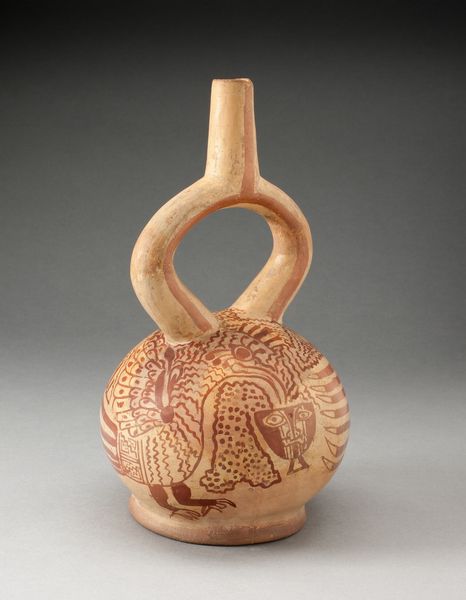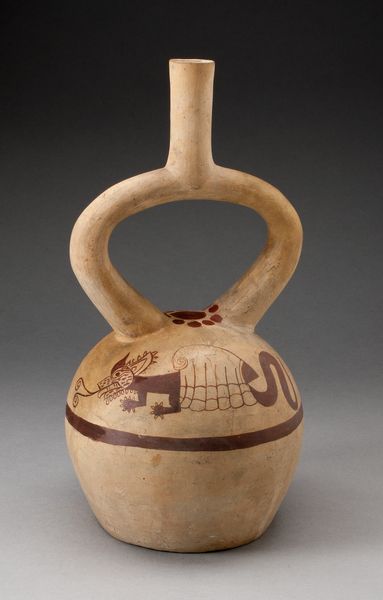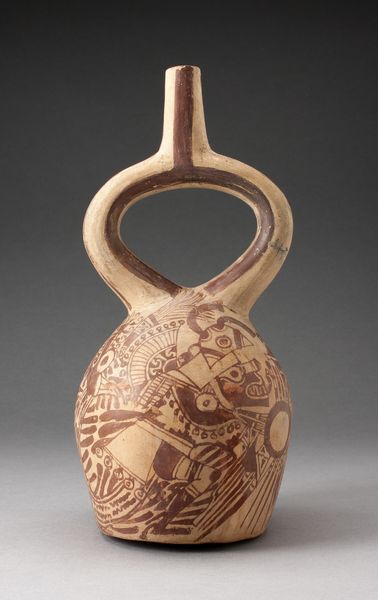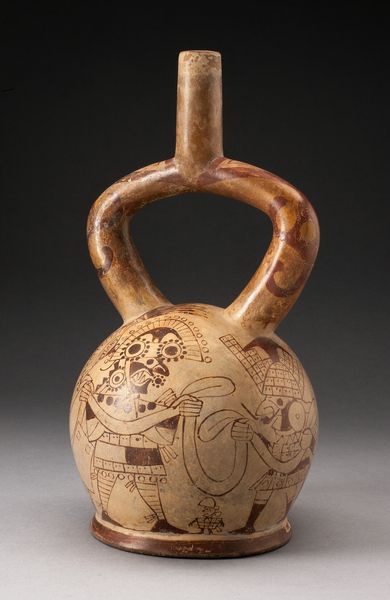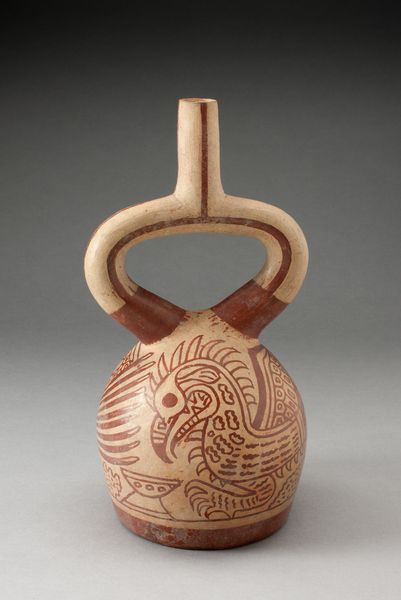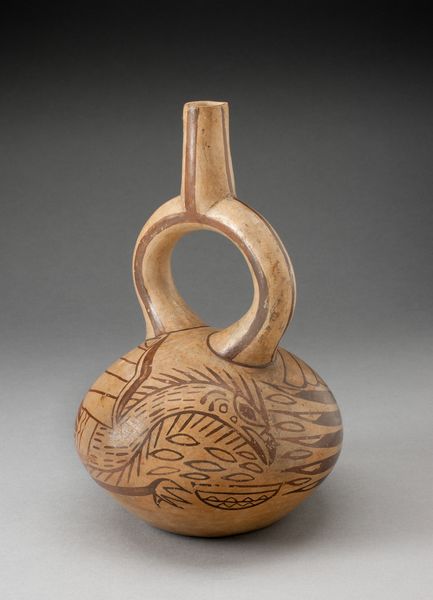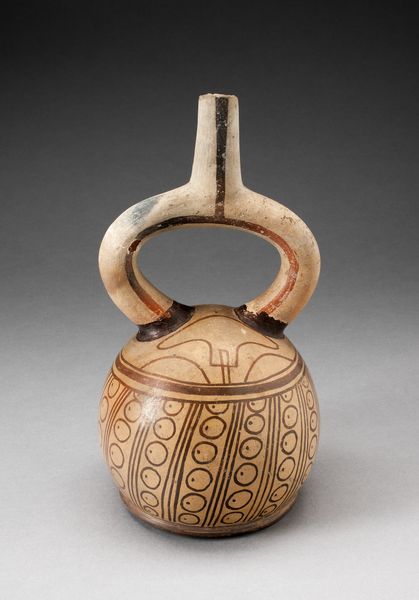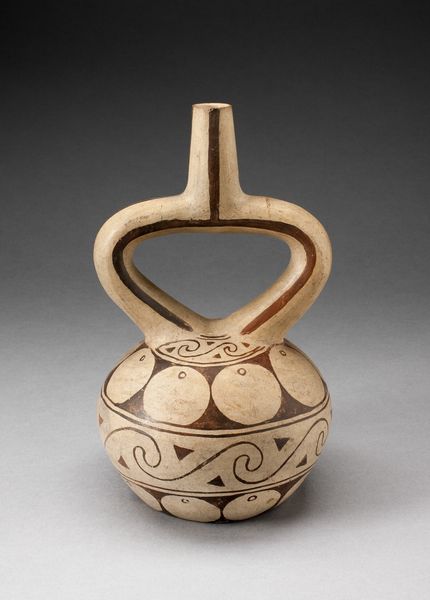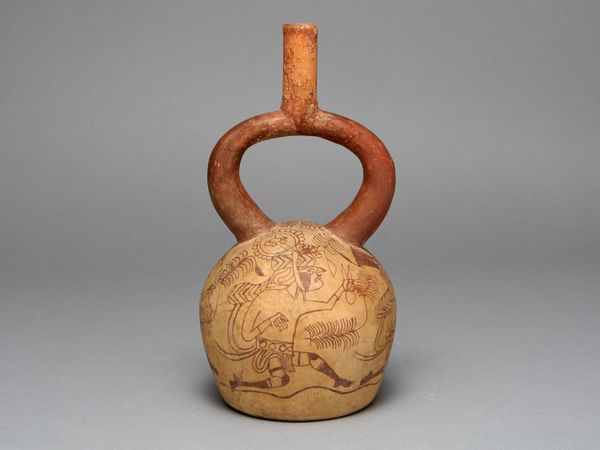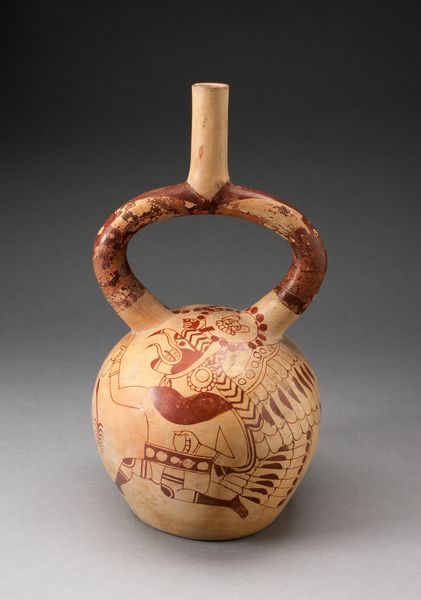
ceramic
#
ceramic
#
figuration
#
indigenous-americas
Copyright: Public Domain
Curator: Looking at this ceramic piece, my immediate thought is: storytelling. It feels alive with a narrative from another time. Editor: Indeed. Here we have a "Vessel" created by the Moche people around the 5th to 6th century. It is currently held in the collection of the Minneapolis Institute of Art. What I find fascinating about this piece is the socio-cultural context from which it emerges—the Moche civilization, renowned for their sophisticated pottery. Curator: It’s so elegant, even beyond its utilitarian purpose. The bridge handle is perfectly formed and balanced atop this rounded form decorated with complex, linear drawings in what appears to be dark slip. I wonder, what tale is being spun in these images? What symbolic language are we witnessing? Editor: Exactly. These weren’t merely decorative items; the Moche used ceramics as a primary medium to depict their world. We can see reflections of their rituals, their cosmology, their daily lives. These pieces often served as elite burial offerings, reflecting social status and access to skilled artisans. This vessel’s depiction is particularly elaborate. Curator: Look at the intricate details of the figure depicted, and the radiating shapes and possible glyphs; this visual vocabulary would have been rich in significance. Do you think we can say that the figure is some sort of warrior? Perhaps a character involved in mythological cycles? Editor: Possibly, but let's avoid simplistic categorization. I'd argue that the very concept of "warrior" is something we impose. We have to ask ourselves how it functioned within the Moche worldview, in order to approach its real value as cultural symbol. What values are enshrined through it? The function and political ramifications of artistic choices are especially important in non-Western contexts. Curator: I understand your skepticism—it is the historian's calling. Yet as someone trained in semiotics, I can also perceive symbols being deployed for distinct reasons, appealing to very visceral human concepts of aggression and struggle. These could very well indicate a narrative related to rites of passage within their culture. Editor: Perhaps we can never fully know—the cultural context is distant and largely irretrievable. However, by examining the vessel's artistry, design, its place within collections and historical accounts, and interpreting symbols, we can attempt to piece together a more profound connection with a world and a way of thinking distinct from our own. Curator: The journey of discovering these layers of cultural memory, through art objects like this, is endlessly inspiring. Editor: Indeed. This ceramic vessel invites us to meditate on art's place as an essential medium of knowledge and connection across time and cultures.
Comments
No comments
Be the first to comment and join the conversation on the ultimate creative platform.
